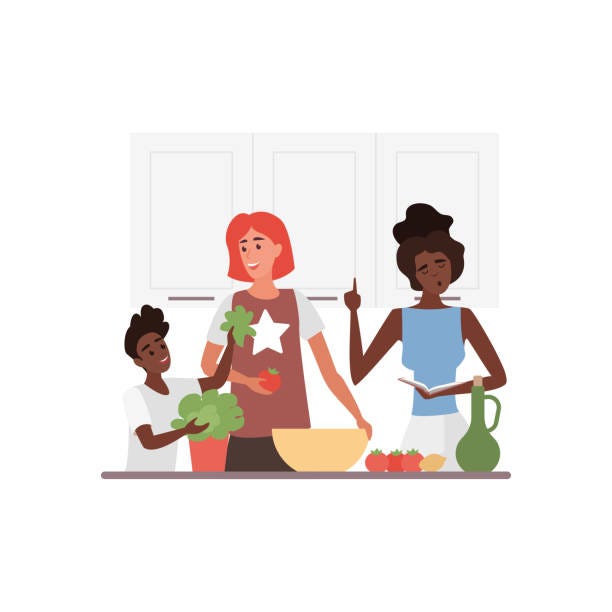Chapter 5: Kitchen Wizardry
No-Recipe Meals That Don't Taste Like Garbage
Let's get one thing straight: cooking without recipes isn't some mystical art reserved for culinary school graduates or your grandmother who makes everything taste amazing without measuring a damn thing. It's a practical skill that's going to save your ass on busy weeknights, when your pantry's looking pathetic, or when you're just too fucking tired to follow instructions.
The secret to no-recipe cooking is understanding flavor foundations. Once you grasp those, you can throw together meals that actually taste intentional rather than like sad desperation on a plate.
The Holy Trinity of Not-Shit Cooking
Start with what I call the "Holy Trinity of Not-Shit Cooking":
Salt isn't just table salt—it's fish sauce, soy sauce, miso, parmesan, capers, olives—anything that brings that savory punch. Every cuisine on earth has figured this out. Learn from them.
Acid cuts through richness and wakes up flavor. Lemon, lime, vinegar, wine, yogurt, tomatoes—they all bring brightness. Without acid, food tastes muddy and one-dimensional. It's the difference between "meh" and "goddamn, that's good."
Fat carries flavor and creates satisfaction. Olive oil, butter, avocado, nuts, cream—they provide mouthfeel and help flavors linger. Fat is your friend, not your enemy. Embrace it.
The fourth element? Heat. And I don't just mean cooking temperature. I mean actual heat—chile peppers, black pepper, ginger, horseradish. That slight burn that makes you want another bite.
Real-Life Application
Here's how this plays out in real life. You open your fridge and find: half an onion, some wrinkled bell peppers, a container of leftover rice, and some eggs. Garbage dinner, right? Wrong.
Chop and sauté that onion in a generous glug of olive oil (fat)
Throw in those diced peppers
Season aggressively with salt and whatever spices you have—cumin, paprika, chili powder, whatever (salt and heat)
Add the rice and stir until hot
Push everything to one side of the pan, add more oil, and crack in those eggs
Cook until the whites are set but yolks are runny
Before serving, hit it with hot sauce or a squeeze of lime juice (acid and heat)
Congratulations, you just made a not-garbage dinner.
The Formula Works With Anything
Greens wilting in your crisper drawer? Sauté them with garlic, red pepper flakes, and olive oil. Finish with lemon juice and salt.
Random vegetable assortment? Roast them with plenty of oil, salt, and your favorite spice blend until caramelized. Dress with a simple vinaigrette.
Lone chicken breast? Cut it into pieces, season with salt and whatever spices speak to you, sauté in butter, deglaze the pan with a splash of wine or even just water, add a spoonful of mustard and a squeeze of lemon.
Level Up Your No-Recipe Game
Once you start thinking in terms of these elements rather than strict recipes, you'll start seeing possibilities everywhere. You'll stop panicking when you don't have exactly what a recipe calls for. You'll start understanding why certain flavor combinations work while others fall flat.
Practice building flavor in layers:
Start with aromatics (onions, garlic, ginger, etc.)
Add your main ingredients
Season throughout the cooking process rather than just at the end
Always taste as you go—your tongue is the most important tool in your kitchen
And for fuck's sake, don't be afraid of seasoning. The difference between home cooking and restaurant food is often just salt and butter. They're not using better ingredients; they're just not timid with the fundamentals.
When in doubt, look to classic combinations that have stood the test of time:
Tomatoes and basil
Lemon and garlic
Ginger and scallion
These pairings exist because they work. They're your safety net.
Want to level up your no-recipe game? Learn ratios instead of recipes:
A basic vinaigrette is 3 parts oil to 1 part acid, plus salt and whatever flavorings you like
A standard quick bread is 2 parts flour, 2 parts liquid, 1 part egg, and 1 part butter, plus leaveners and flavorings
Once you know these patterns, you can riff endlessly.
The final piece? Understanding doneness. This comes with practice, but start by using your senses:
Meat should have the right resistance when poked
Vegetables should retain some bite unless you're deliberately cooking them until soft
Baked goods should smell fragrant
Trust yourself.
No-recipe cooking isn't about winging it completely—it's about understanding principles so well that you don't need step-by-step instructions. It's liberating. And once you get the hang of it, you'll waste less food, save money, and actually enjoy throwing together meals from whatever you've got on hand.
Leftover Magic: One Meal Into Three
Keep reading with a 7-day free trial
Subscribe to Wendy The Druid to keep reading this post and get 7 days of free access to the full post archives.



